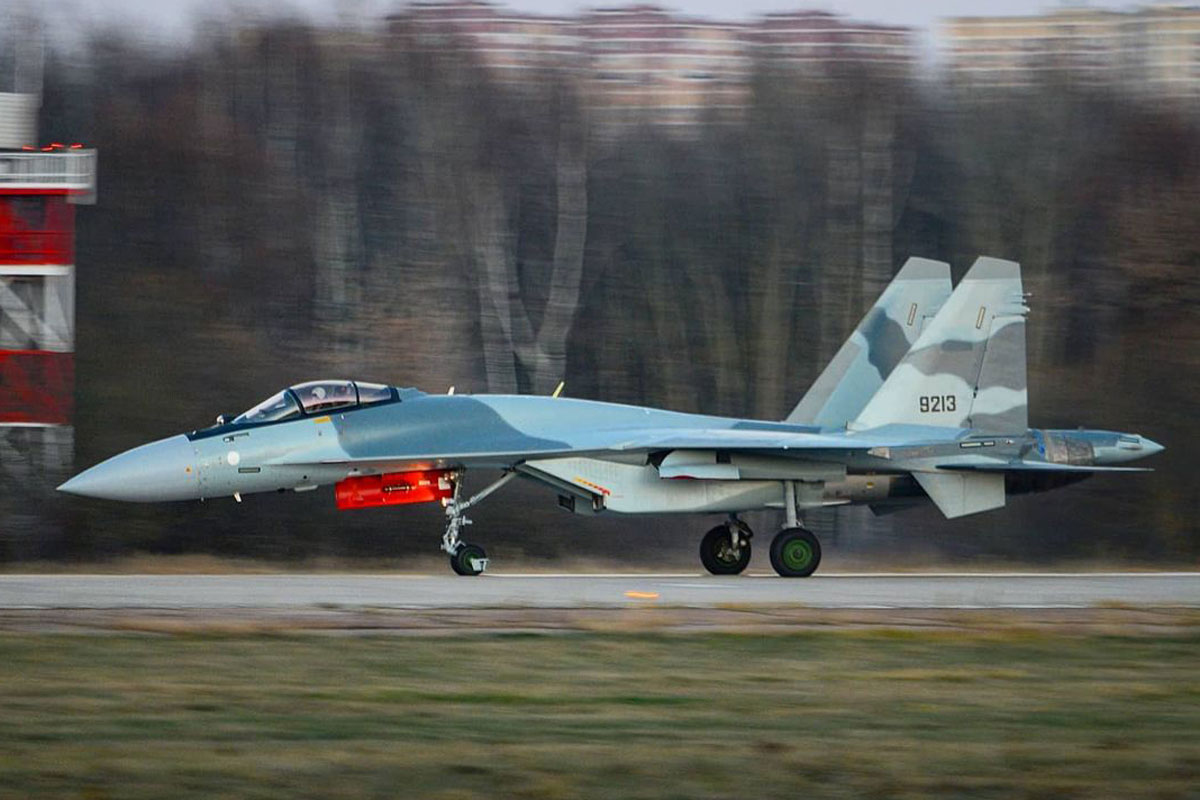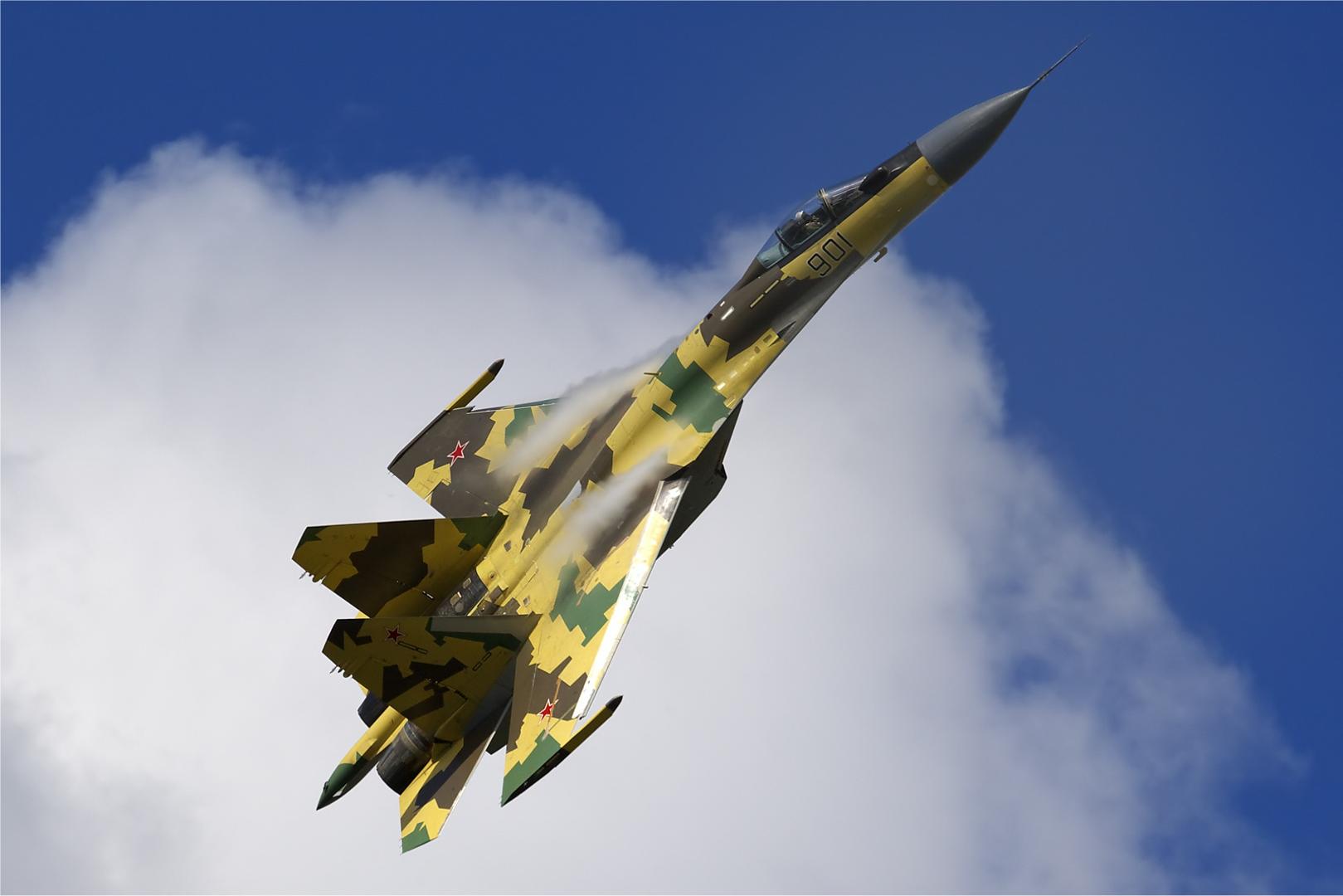A host of reports from Algerian sources suggest that the Algerian Air Force is poised to start receiving Russian Su-35 fighter jets. This acquisition would position Algeria as the third operator of these advanced aircraft, following China and Russia. Historically, Algeria has been the second-largest buyer of Russian military hardware, just behind India, despite the rising popularity of Chinese systems in the global market.

The specific Su-35s are believed to be part of the batch initially produced for the Egyptian Air Force. Egypt had placed this order in 2018 but later backed out due to economic threats from Western nations.
The fighters were anticipated to be supplied to Iran in a deal exchanging them for Iranian ballistic missiles and drones. However, some reports suggest that the arrangement fell through as Iran remains focused on investing in assets with asymmetric value, such as ground-based air defense systems.

Initially, Algeria was not expected to acquire Su-35s, as the more advanced and capable fifth-generation Su-57 Felon was slated to be the next addition to its fleet.
Aside from the Su-57’s superiority, one key factor believed to deter Algeria from procuring the Su-35 was its existing fleet’s backbone, the closely related Su-30MKA. Both are heavily enhanced ‘4+ generation’ derivatives of the Soviet Su-27 Flanker, a fourth-generation fighter that was considered the pinnacle of air-to-air performance when it first entered service in 1984.
Today, over 70 Su-30MKAs are at the core of the fleet, incorporating technologies from the canceled Su-27M and Su-37 air superiority fighters, including thrust vectoring engines for exceptional maneuverability and an N011M phased array radar. When first ordered in 2006, these fighters were among the most formidable globally, putting Algeria several years ahead of any other African nation and most Arab states, except the UAE, in fielding fighters equipped with phased array radars.

Although the Su-35 surpasses the Su-30MKA in capability—particularly with its advanced engines and radar, including secondary wing root AESA radars—Russia has long offered Su-30 clients the option to upgrade their aircraft with the Su-35’s AL-41F-1S engines and Irbis-E radar. Adding a few Su-35s to the Su-30MKA fleet could complicate Algeria’s maintenance requirements without introducing groundbreaking new capabilities.
Both aircraft, the Su-35 and the Su-30, serve as versatile multirole fighters capable of executing air superiority and ground attack missions. Essentially, the Su-35 doesn’t offer a new mission profile that the Su-30 can’t already handle. They are also compatible with similar air-to-air and air-to-ground munitions, so the Su-35 doesn’t introduce any exclusive weapon systems. Consequently, the operational doctrine for a fleet using Su-30s remains largely unchanged with the addition of Su-35s; instead, the Su-35 enhances existing capabilities rather than revolutionizing them.
If reports of Algeria ordering the Su-35 prove true, several explanations could be behind the decision. One notable possibility is that Algeria may lease the fighters until Su-57s become available, potentially due to delays in producing the next-gen aircraft or because the Russian Defense Ministry is keen on accelerating its own procurement process.

Another potential move could be the Algerian Air Force’s modernization of its Su-30 fleet using AL-41F-1S engines. This upgrade would not only lower operational costs but also enhance range and flight performance, creating consistency with the Su-35’s powerplants.
Another compelling scenario is that Russia might be pushing to export these fighters at any price after deals with Egypt and Iran fell through, and a deal with Indonesia remains indefinitely on hold. Russia may be offering these aircraft under very attractive conditions. Notably, production costs for Russian fighter jets are quite low, with the cost of manufacturing a Su-35 cited as low as $18 million, depending on the exchange rates.
Although this is still over 50 percent more than the cost of a Su-30SM, it’s less than half the price of a Su-57. This gives Russia ample flexibility to offer the fighters at prices significantly below the over $83 million price point set for Egypt and China, which included spare parts, training, and weaponry.

Supplying Su-35s at a below-market price could be Russia’s strategy to keep its most crucial defense relationships intact, especially with key partners like China and India. This move might help balance out Russia’s challenges as an arms supplier, including its struggles to fulfill orders for tanks and other ground forces equipment due to the ongoing conflict in Ukraine.
For the Algerian Air Force, getting Su-35s at a discount, combined with their low operational costs and long service life, seems like an appealing deal. Despite the potential complications of having a mixed fleet of Su-30s, Su-35s, and the anticipated Su-57s, the offer’s benefits can’t be ignored.
However, it’s still uncertain how the Su-35s would fit into Algeria’s current lineup. Some local sources suggest that these aircraft could replace some of the older Su-30MKAs, though this seems unlikely given that these fighters are still relatively new.

The oldest Su-30MKAs in the country are still much newer than those in China and India, where neither country is close to retiring their aircraft. Notably, China continues to use its fleet quite intensively. Another possibility is that these fighters could replace Algeria’s recently retired MiG-25 interceptors, although the Su-57s were anticipated to fill this role.
Alternatively, they could replace some of the older Su-24M strike fighters in the fleet. However, the Su-35, being an air superiority fighter, isn’t ideally suited for such missions. If these reports on Su-35 acquisitions hold true, the future composition of Algeria’s fighter fleet appears quite uncertain.





